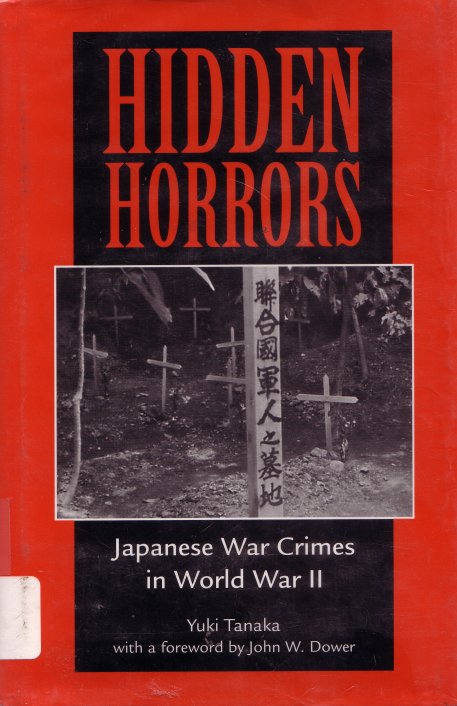
Hidden Horrors: Japanese War Crimes in World War II (1996)

This is another book on the subject of Japanese war crimes. Although it covers the type of material various other books do, such as the biological warfare experiments, it also includes a chapter dealing with rape during war.
The book starts off in the forward with an interesting statement:
”Certain egregious Japanese war crimes were covered up to serve American interests.”
This refers to the failure of the US to prosecute certain individuals who were involved in the Unit 731 biological warfare experiments in exchange for the information that they had obtained in their experiments. Lest anyone get too upset at this, remember that many German rocket scientists who worked on the V-1 and V-2 were not prosecuted either. Rather, then went to work for the US rocket program. I think it's called “enlightened self-interest.”
The book notes the various types of war crimes that were prosecuted:
A Class: “Crimes against peace”, which included military leaders and politicians who started the war and had responsibilities for the various war crimes actually committed by others.
B Class: Crimes committed by regular soldiers against enemy soldiers or civilians of enemy countries.
C Class: Crimes against humanity, crimes committed against civilians of any nationality.
There were various war crime trials, not just ones run by the US. There was also the International Military Tribunal for the Far East which tried 28 war leaders, finding 25 guilty. Another was declared insane and the other two died before the end of the trials.
The book also discusses how some people in Japan have reacted over time to Japan's war in WWII crimes. They have held that Japan was the victim during the war (often mentioned in the atomic bomb), and that other countries did the same sort of thing, too.
”The view of most Japanese on the Asia-Pacific War is overwhelmingly inclined toward seeing ourselves only as the victim. There are several reasons for this myopia, such as the fact that we were victims of the world's only nuclear holocaust; that, unlike in Germany, the Japanese committed no racial genocide within its own country or abroad; that we were threatened by economic and political advancement of Western powers into Asia; and that Japan's national ethos specific to its fascist ideology was based upon the emperor ideology. This national ethos prevented us Japanese from perceiving ourselves as the aggressors that we were.”
The Chinese might argue with the lack-of-racial-genocide thing; feelings are still strong about the Rape of Nanking and similar incidents. “
The author points out that the behavior of British, American and Commonwealth soldiers was much more restrained that the behavior of the Japanese soldiers, at least until the actual occupation of Japan. Apparently when that happened there were a multitude of rapes committed by occupying forces. For example, from August 30 thru Sept. 10, 1945, there were 1,336 reported rapes of Japanese women by US soldiers in one prefecture alone. Keep in mind that the number was reported rapes; many rapes certainly went unreported. If that number was representative, then it means that US soldiers committed rapes on a par with any other nation in the war.
Another interesting thing that the book has is that, during the battle of Saipan Islands in June and July of 1944, Japan planned to attack the US with biological weapons. Only the relatively quick victory of US forces kept any of their plans from being put into action.
This is a very good book on a subject which can be quite upsetting to read about but which nevertheless should be studied, especially in the light of the “weapons of mass destruction” controversy that goes on today about Iraq.
Main Index
Japan main page
Japanese-American Internment Camps index page
Japan and World War II index page
|